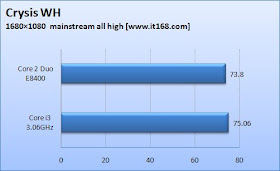

There is, however, more than a bit of overlap in functionality and performance, and figuring out which one is best suited for a task won't be simple.Īs of February 2010, Intel has announced about three dozen of the new Core i3/i5/i7 processors. Core i7 processors generally have more cache and support more of the special Intel features and technologies than Core i5 and Core i3 processors. Core i3 processors, for example, do not have the Intel TurboBoost feature that provides extra performance via automatic overclocking and seems more than just a marketing feature. As a rule of thumb, the 3/5/7 sort of represent Intel's "good," "better," and "best" processor solutions in any given category just like BMW makes 3, 5, and 7 series cars (though the analogy only loosely applies). Unfortunately, while the difference between Intel's older Core 2 Solo and Core 2 Duo processors was pretty obvious, differentiating between the Core i3, Core i5 and Core i7 chips can quite confusing. The new Intel Core i3, Core i5 and Core i7 processors come in numerous versions with two or four cores, clock speeds ranging from 1.06 to 3.33 GHz, maximum power dissipation of 18 to 95 watts, different process technologies, different degrees of integration and different complementing chipsets. In essence, the Core 2 Duo that has served the mobile community long and well is being replaced by a next generation of mobile chips with higher performance, newer technology, better integration, improved efficiency, and smaller package sizes.

Just when most manufacturers of rugged mobile computers have switched from earlier platforms either to Intel Atom or Core processors, Intel raises the ante again with new Atoms and the next generation of Core processors. | Windows Mobile and the vertical markets » FebruA look at Intel's new Core i3/i5/i7 processors and how they will affect rugged computing

« Talking with Paul Moore, Fujitsu's Senior Director of Product Development |


 0 kommentar(er)
0 kommentar(er)
